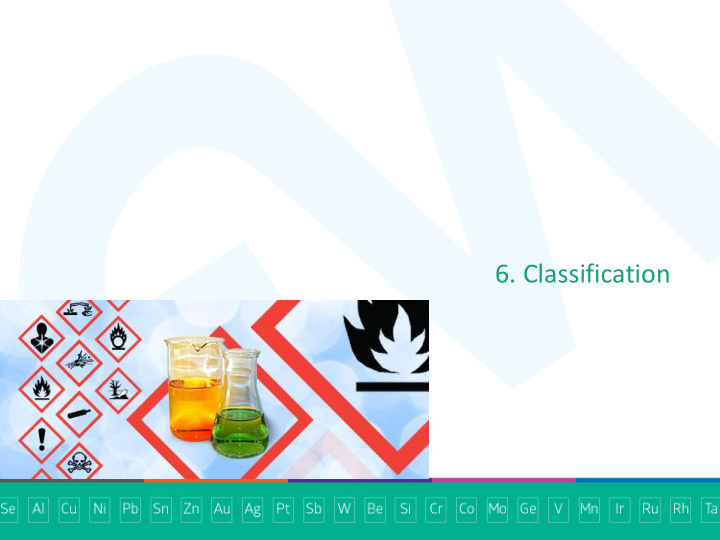



6. Classification
6.1 Brief reminder on the CLH process
SUMMARY- CLH Process 18 months RAC meetings (Commenting possible during meetings) Fast-track (written Accordance CLH consultation check ECHA Proposal RAC) Harmonised Response to classification RAC Final opinion COMMENT RAC Draft opinion proposal Comments (CLH) Commission Annex VI draft entry in ATP proposal RAC Public Consultation DS Interservice Consultation Dossier RAPPORTEUR “ The public ” Submitter WTO - Includes ALL “ parties (DS) concerned ” Vote ATP proposal by REACH Committee Entry into force + 18months Published in CLP “All manufacturers, importers and users of the substance Scrutiny by Annex VI through in the EU should classify the substance accordingly” Council & ATP Parliament
Key rules • Understanding the process : when to provide input and how? Who to mobilise? • Have an up to date registration dossier • Ensure communication with impacted « industries » • Strong but appropriate expertise present during the RAC discussions: Prepare: need to have ‘agreement’ to attend and be announced Limited time for interventions at the meeting but possibilities for networking Use your STO for ‘ principles ’ issues Only technical and scientific interventions Follow-up « RAC rules are RAC rules » • Commission may help, but does not ‘ save ’
What about the SCIENTIFIC information that will be used? The Dossier Submitter’s “Information base” is summarized in the Annex XV proposal. New information of relevance for the hazard properties under review for harmonised classification may be HIGHLY IMPORTANT BUT: - CAN ONLY be submitted under the Public Consultation (45 days) - SHOULD be included in the Registration file when submitted by a manufacturer - the last day of the Public Consultation acts as a formal deadline beyond which new information is not recognised for RACs activities. - What if a response on RAC Rapporteurs’ opinion is required? Sometimes information provided to the chair of RAC by a formal STO can still be recognised (but often not) RAC PUBLIC • 45 days at the start • NEW SCIENCE INFO HIGHLY WELCOMED Consultation • NEW SCIENCE INPUT NOT POSSIBLE Commission • Commission may return proposal to RAC if decision for new NEW EVIDENCE was neglected (process ATP failure) (Article 77(3)) • New science info can be submitted FOLLOW-UP legislation e.g. • Focus on “exposure” info restriction or • “New effects info” is highly unlikely authorisation to be recognised
What about SOCIO-ECONOMIC information? SEA information is in principle NOT CONSIDERED under the harmonised Cl&L process. However: - Generic impact information (what sectors, workplace or consumer, …) may be useful in case a fast track procedure is applied by the RAC Rapporteur (triggering a discussion in plenary rather than written procedure) - Costs related to the implementation can be useful at the level of the Commission discussion - Precise and focussed cost benefit information is highly relevant for restriction cases including the semi-automated triggering of marketing and use restrictions on Consumer use for new CMRs • 45days at the start RAC PUBLIC • SEA INFO is not part of the focus of the PC Consultation • Generic SEA impact info somewhat relevant for “ fast track” • SEA INPUT very relevant • FOCUS on SEA info related to the DIRECT impact COM decision for new ATP of CL&L (less the impact caused by other legislation) • SEA info MOST welcome: can be submitted FOLLOW-UP legislation e.g. • Focus on SEA/SIA relevant to the scope of the restriction or restriction case authorisation • from a company and societal perspective
Recommend
More recommend